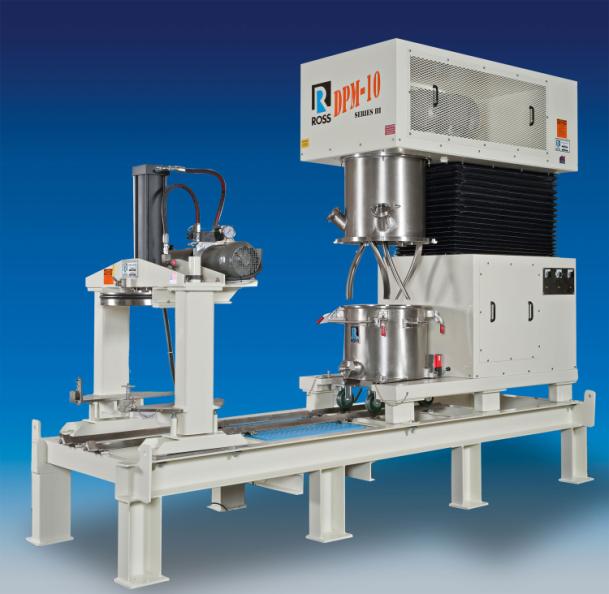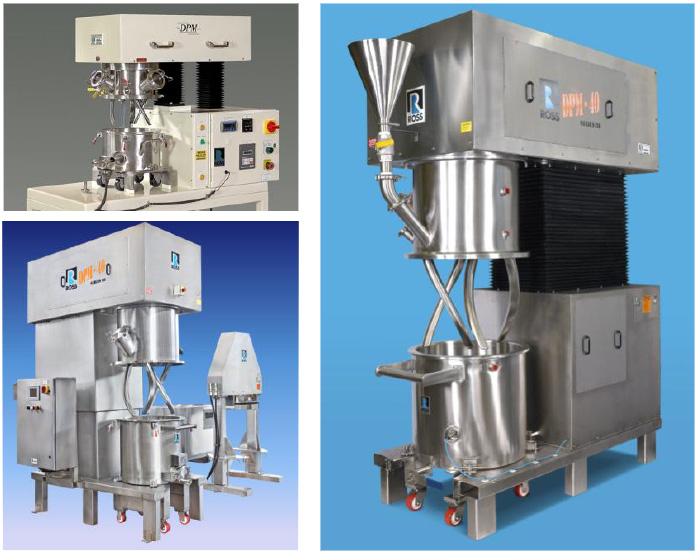Tech Report
Recommended Mixing Equipment For Ceramic Injection Molding Feedstock

Technology Brief
Ceramic Injection Molding (CIM) is a forming technique used to manufacture parts with complex geometries.
Mixing is an integral part of the CIM process. Fine ceramic powders must be mixed thoroughly with thermoplastic binders, along with additives, to produce a homogeneous feedstock. This feedstock is pelletized, melted and molded into a net shape. Heat is then applied to remove the binder and the part is sintered in a high-temperature kiln where it shrinks uniformly by as much as 20% while retaining the complex shape. Proper mixing of the feedstock is necessary in ensuring that the finished part possesses the desired material properties and precision.
Ross Double Planetary Mixers
Double Planetary Mixers are proven equipment for the processing of ceramic injection molding feedstock. They move material by rotating two identical blades on their own axes as they orbit on a common axis. The blades contact virtually every point of the batch, imparting a very thorough mixing action even when the product is not free-flowing.
The batch may start with melting solid polymers right in the mix can. Once the binder is in liquid form, ceramic powders such as alumina, zirconia or silicon carbide are added in increments, along with any lubricants, plasticizers or dispersants. Each mixing step is performed under vacuum to ensure a void-free mixture. As product viscosity reaches a few million centipoise, shear in the batch increases sharply and agglomerates are quickly disintegrated. Ross Double Planetary Mixers equipped with High Viscosity "HV" Blades (US Patent No. 6,652,137) are particularly ideal for handling peak viscosities up to 6 million cP.
After the mixing cycle, the vessel may be transferred to a Discharge System in order to extrude the homogenous feedstock into strands in preparation for pelletizing.
Other Ceramic-Filled Materials typically produced inRoss Planetary Mixers:
- Bone Graft Substitutes
- Dental Composites
- Dilatant Materials
- Heat Sink Compounds
- Investment Casting Slurries
- Lubricants
- Microsphere-filled Composites
- Polymer Concrete
- Potting Compounds
- Refractory Cements
- Screen Printing Pastes
- Other Advanced Composites

Some Advantages of Ross Double Planetary Mixerswith High Viscosity "HV" Blades
- Enhanced mixing accuracy. High Viscosity Blades prevent the `climbing` issue commonly experienced with traditional rectangular planetary stirrers. Due to their precisely angled helical contour, the HV blades generate a unique mixing action: each sweeping curve firmly pushes batch material forward and downward, keeping it within the mixing zone at all times. Another important feature is the flush discharge valve which eliminates any dead spots where batch materials can stagnate.
- Cleanability. There are no shaft seals, bearings, packing glands and stuffing boxes submerged in the product zone of the Double Planetary Mixer. Agitators are raised and lowered by a hydraulic lift allowing easy access for cleaning between batches.
- Change can design. The interchangeable mix cans may be designated to particular formulations or colors. This feature significantly reduces the risk for cross-contamination between batches while allowing for semi-continuous operation when one mixer is used with multiple vessels.
- Fast and easy discharge. With the mix can positioned beneath the Discharge System, a platen is lowered hydraulically into the vessel. A specially-fitted O-ring rides against the vessel, virtually wiping the sidewall surfaces clean as product is forced out by the platen. Ross supplies cove plugs with discharge adaptors that can be used with a die to produce long threads of the viscous product.